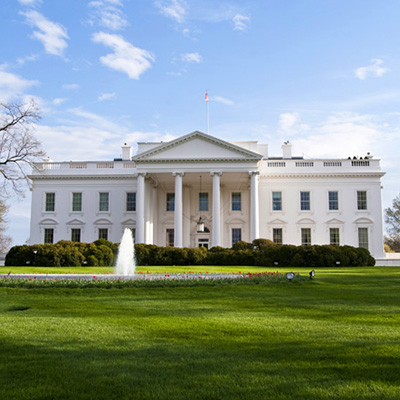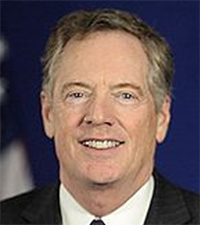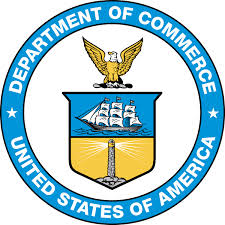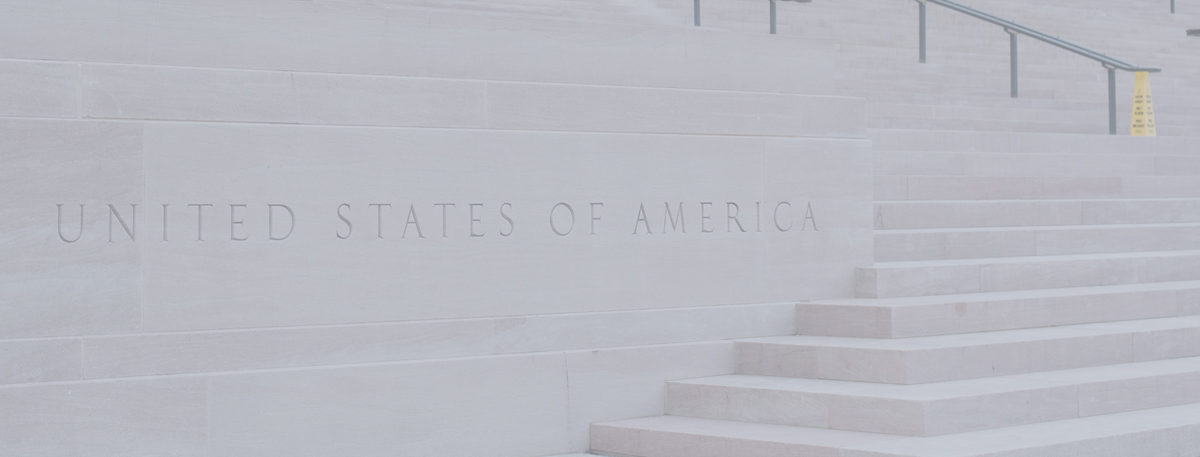February 2019
February 1, 2019
April 2019
April 1, 2019China Negotiations Take Center Stage
Two issues consumed the headlines in Washington last month – funding for a wall at the border with Mexico and the continuing negotiations with China on trade. Other trade issues such as free trade agreements with Canada, Mexico, Japan, the European Union, and even Brexit were swept off the stage here in the Nation’s Capital. For its part, the FTZ industry dodged a bullet when the President decided to postpone an increase in ‘List 3’ tariffs from 10 to 25%, and talk of a List 4 has abated in anticipation of an agreement to be made in March during a meeting of President Xi of China and President Trump of the US. It remains unclear how deep the concessions made by China will be, and if they will be sufficient to induce the President to eliminate the punitive tariffs already in place. High stakes for all involved.
Top Story: President Postpones Expansion of Section 301 Tariffs, FTZs Relax (For Now)
USTR Denies White House Is Lowering Its Sights On China Trade Goals


Grantees See Opportunity Zones Gain Attention On Wall Street
Is Britain About To Pivot On Brexit?


FTZ Board Deadlines Extended, But CBP’s Are NOT
The recent shutdown caused the U.S. Foreign-Trade Zones Board to extend all deadlines and due dates by the 40 effective days that the Department was furloughed. That means that Grantees now have until May 10th to submit their Annual Report information. Many Grantees have likewise extended their reporting deadlines as companies were unable to submit their information through the Online FTZ Information System (OFIS), which was shut down for the duration of the furlough.
That did not change any of the deadlines for annual reports due to U.S. Customs and Border Protection. Grantees and Operators should keep in mind that their Annual Reconciliation Reports and Annual System Review Letters are due according to the normal times. Questions? Ask away at FTZine@iscm.co .

U.S. Foreign-Trade Zones Board Activity
- Kaiser Aluminum Fabricated Products, LLC, received authorization of production activity for aluminum extrusions in Site #5 of Foreign-Trade Zone 207 in Richmond, Virginia. MORE
- Catalent Pharma Solutions, LLC, submitted an application of production activity for pharmaceutical products in Foreign-Trade Zone 193 in Clearwater, Florida. MORE
- Constantia Blythewood, LLC, received authorization of production activity for flexible packaging and engineered industrial films in Foreign-Trade Zone 127 in West Columbia, South Carolina. MORE
- Microchip Technology, Inc., received authorization of production activity for semiconductor devices and related products in Foreign-Trade Zone 75 in Phoenix, Arizona. MORE
- Hartland Controls, LLC, submitted an application for subzone status for its facilities in Foreign-Trade Zone 271 in Rock Falls, Illinois. MORE
- Xerox Corporation, submitted a notification of proposed production activity for polyester latex for printer/copier toner in Foreign-Trade Zone 106 in Oklahoma City, Oklahoma. MORE
- Fender Musical Instruments Corporation, submitted an application for subzone status for its facilities in Foreign-Trade Zone 50 in Long Beach, California. MORE
- Albany Safran Composites LLC, received approval to operate its Rochester, New Hampshire facility as Foreign-Trade Subzone 81E. MORE
- Future Electronics Distribution Center, L.P., received approval to operate its South Haven, Mississippi facility as Foreign-Trade Subzone 287B. MORE
- The Woodbridge Group, submitted a notification of proposed production activity for flame laminated textiles in Foreign-Trade Zone 68 in El Paso, Texas. MORE
- Tesla Inc., submitted an application to expand Subzone 18G in San Jose, California. MORE
- Sault Ste. Marie Economic Development Corporation submitted an application to reorganize Foreign-Trade Zone 16 under the Alternative Site Framework in Sault Ste. Marie, Michigan with a service area of Chippewa County, Michigan. MORE
- International Flavors & Fragrances, Inc., received authorization of production activity for flavor and fragrance products in Foreign-Trade Zone 44 in Trenton, New Jersey. MORE
- DSM Nutritional Products, received authorization of production activity for vinylol in Foreign-Trade Zone 149 in Freeport, Texas. MORE
- GlaxoSmithKline PLC, submitted a notification of proposed production activity for pharmaceutical products in Foreign-Trade Zone 93 in Raleigh, North Carolina. MORE
- WPG Americas Inc., submitted an application for subzone status in Foreign-Trade Zone 262 in Southhaven, Mississippi. MORE
- Swagelok Company, submitted an application to expand Subzone 40I in Foreign-Trade Zone 40 in Cleveland, Ohio. MORE
- The Grand Junction Area Chamber of Commerce has submitted an application to create a new Foreign-Trade Zone under the Alternative Site Framework in Grand Junction, Colorado with a service area of Delta, Garfield and Mesa Counties, Colorado in their entirety and portions of Montrose and Rio Blanco Counties, Colorado. MORE
- Adams Warehousing, LLC, submitted an application for subzone status in Foreign-Trade Zone 59 in Lincoln, Nebraska. MORE

